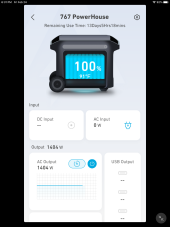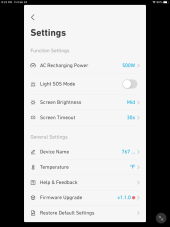I have a Honda EU2200i generator in case of an outage now, and was looking at an Anker 767 as a possible addition to my home power backup setup. I had envisioned a 4 kWh Anker setup next to my transfer switch in the basement, then rewiring the generator input as a way to charge it back up during an extended outage. Effectively a rechargeable UPS.
I've been watching YouTube and scouring Amazon reviews, but all I've found is a few anecdotal references that it does allow pass-through charging. The user manual indicates a max AC input of 1440W (120V 12A), a max bypass of the same. I'm trying to find out if I'm drawing less than 1440W to power the critical loads, would the excess charge the battery?
Anyone have a 767 and tried something like this before?
I've been watching YouTube and scouring Amazon reviews, but all I've found is a few anecdotal references that it does allow pass-through charging. The user manual indicates a max AC input of 1440W (120V 12A), a max bypass of the same. I'm trying to find out if I'm drawing less than 1440W to power the critical loads, would the excess charge the battery?
Anyone have a 767 and tried something like this before?






